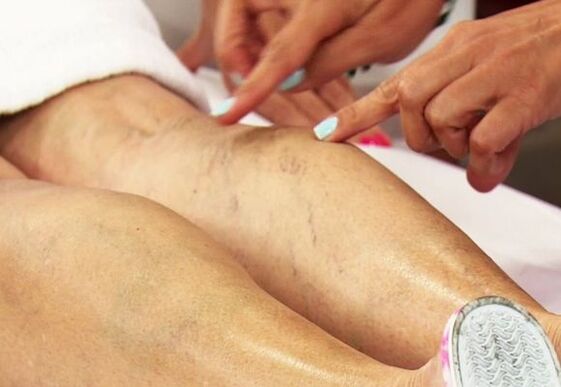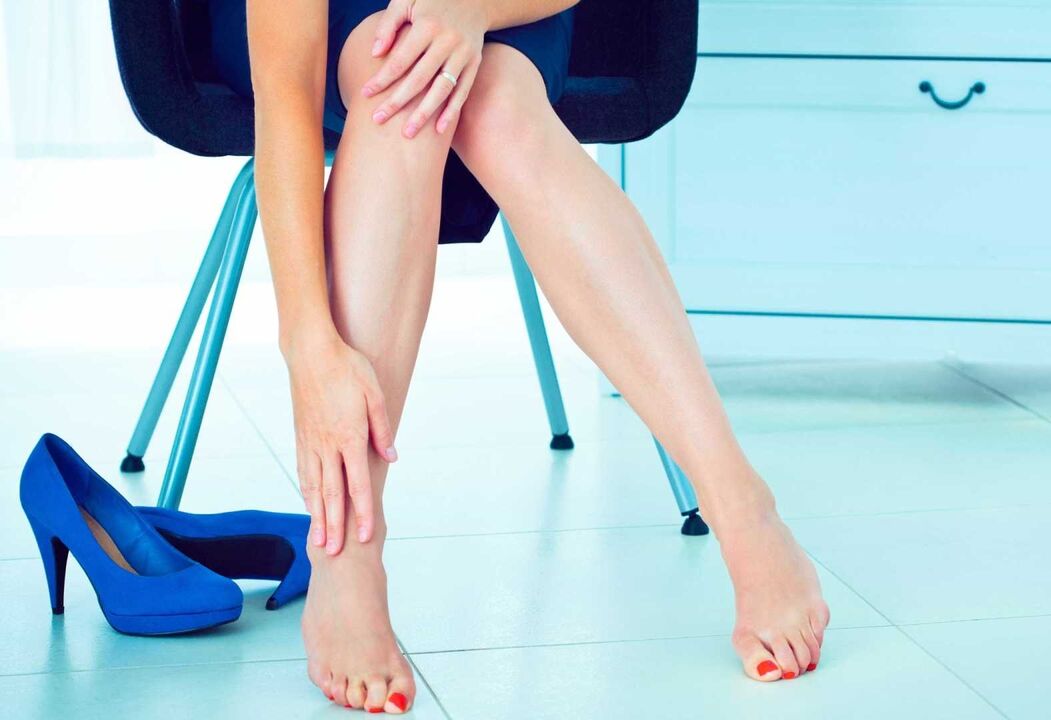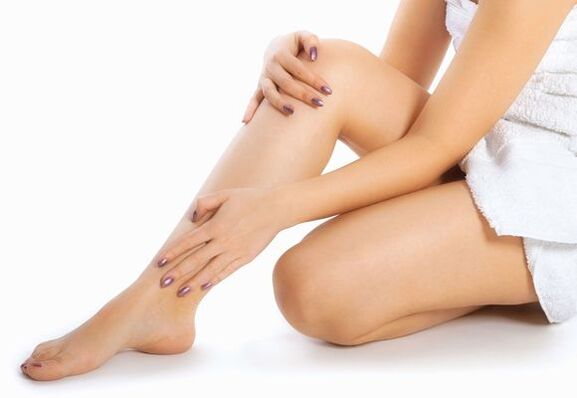Varicose veins are a very insidious disease. Over the years, it can be difficult to manifest because in the early stages, nothing bothers a person, and minor illnesses are attributed to living conditions rather than vein problems. Then the exacerbation starts, the disease progresses, and it becomes more difficult to cure. In this condition, varicose veins can affect multiple parts of the body that have veins. But the vast majority suffer from female legs, so symptoms of varicose veins in women should be taken seriously.
Varicose veins are a very insidious disease. Over the years, it can be difficult to manifest because in the early stages, nothing bothers a person, and minor illnesses are attributed to living conditions rather than vein problems. Then the exacerbation starts, the disease progresses, and it becomes more difficult to cure. In this condition, varicose veins can affect multiple parts of the body that have veins. But the vast majority suffer from female legs, so symptoms of varicose veins in women should be taken seriously.

Pathogenesis
The main cause of varicose veins in the legs is that the walls of the veins and blood vessels weaken so they can no longer push blood upwards with optimal strength.
The blood becomes stagnant, causing the veins to stretch even more. After swelling, they lose their elasticity, become brittle and eventually stop providing normal blood flow. As blood is constantly trapped in the veins, they can swell, nodules and thrombosis, blocking the lumen of the vessel. This can lead to thrombophlebitis.
Skin cells that don't get enough oxygen begin to die, tissue necrosis occurs, and trophic damage and ulcers occur. This is called end-stage varicose veins of the lower extremities and can only be treated with the help of surgery.
It is no longer possible to completely cure the disease at this stage, but it may slow its course and achieve a more or less stable remission.
important! Doctors believe that the main reason for the appearance of varicose veins in the lower extremities is genetic susceptibility, so if a case of this disease is found in an older generation of the family, special attention should be paid to the health of the lower extremity. vessel.

How not to miss the onset of the disease?
It is important to carefully monitor all diseases, even the mildest. If you catch up to stage 1 of development, when symptoms of varicose veins in the legs just start to appear, in most cases, you can reverse the process and maintain healthy veins. Therefore, the first signs of varicose veins in the legs are:
- Increased swelling that starts to bother you not only at night but at other times of the day;
- Feelings of heaviness and "tired legs" syndrome, already present during the day or earlier;
- Generalized weakness and apathy due to insufficient tissue oxygen supply;
- Spider veins or web-like structures on the legs and thighs are often the first sign that people are concerned about varicose veins.
In this case, see a doctor promptly, and the simplest treatments can help: folk remedies, medicines to prevent varicose veins in the legs - intravenous injections in tablets and capsules, ointments, creams and gels.
If leg varicose veins need to be treated, a phlebologist can prescribe medication to thin the blood and prevent blood clots, as well as wearing special compression underwear or using elastic bandages.
important! Although many drugs have few side effects and are prescribed, including for disease prevention, the decision of which drug to take should be left entirely to the phlebologist, not the patient himself.

What is the danger of this disease?
First, late-stage varicose veins threaten the formation of blood clots, which block the flow of blood and oxygen to the most important arteries and veins near the lungs and heart. Pulmonary embolism often leads to tragic results.
In addition, varicose veins in the legs may be hidden, affecting the blood vessels that pass deep in the legs. This situation is dangerous. When the disease has entered the second or even third stage, the outward signs begin to appear, and it is impossible to do without surgery. Seeking medical attention should not be delayed if:
- Legs start to swell frequently, while kidneys are perfectly healthy, diabetes is not diagnosed, and fluid intake is normal;
- A pulling or second sharp pain in the pelvic organs, groin, and upper thigh;
- Periodic leg cramps, especially at night;
- The area of the lower extremity along the veins begins to swell after any load.
Varicose veins in the legs can seriously complicate a person's life, cause constant pain, and require intervention by a surgeon.
important! Varicose veins are common during pregnancy. Most women are sure it's temporary and will definitely pass after giving birth, but in practice it doesn't always happen.
More commonly, the disease begins to develop after the veins are overloaded during labor. Therefore, the signs of varicose veins during pregnancy should not be ignored under any circumstances.
Are other parts of the body affected?
Symptoms of varicose veins can affect a variety of organs. In particular, arm varicose veins occur much less frequently than lower extremity varicose veins, but they cause just as much anxiety and sadness. You should see your doctor as soon as possible if you notice symptoms in your hands that are similar to the symptoms of this disease:
- Veins become very visible, darkened and swollen;
- swelling in the hands, including the fingers;
- Frequent burning and pain;
- Doing the same movement for a long time can cause problems due to heavy hands;
Varicose veins on the hands appear about the same frequency in women and men, but the disease is 1. 5-2 times less likely to affect more intense sexual activity.
This is because the beautiful half of humanity is more susceptible to fluctuations in the hormonal system, which is one of the main causes of varicose veins in the arms.
important! The first signs of varicose veins in the upper and lower extremities are very similar, but the symptoms of varicose veins in the legs are thought to be the result of flat feet, prolonged walking or wearing high heels, osteochondrosis, and varicose veins in the hands. Many believe to be a physical feature of the venous structure. symptom.
intestinal lesions
Almost as often as leg varicose veins, rectal varicose veins and their prolapse.
Under this name hides the well-known hemorrhoids. Those unfortunate enough to have this condition can tell you how unpleasant the signs of varicose veins can be in such a delicate area:
- sudden severe pain when walking;
- Severe pain when sitting up and unable to sit;
- The appearance of blood in the cracks of the anal passage and its marked swelling, itching, and burning;
- The act of having a bowel movement is also accompanied by pain, especially if combined with constipation, which often occurs in varicose veins in the area.
Symptoms of internal varicose veins are not as difficult to detect as external varicose veins because there is usually no discomfort in the anus.
However, when referring to a proctologist, he usually brings up second-degree varicose veins. It is not as easily cured as the first stage of the disease, but it is entirely possible without the use of drastic measures.

If varicose veins in the arms and legs are more common in women, then rectal varicose veins can affect the body more in men. The main reasons for this are strenuous physical exertion, heavy exercise, alcohol and a lot of junk food, as well as prostate disease that causes narrowing of the urethra.
important! After the first symptoms of rectal varicose veins are noticed, you should start treatment as soon as possible because the danger of disease in this particular area is that the bowel may be affected and the work of the gastrointestinal tract may be disturbed.
The disease develops gradually, without sudden jumps, but can lead to intestinal tumors, both benign and carcinogenic.
male problem
If leg varicose veins are very rare in men, then varicocele is a purely male disease. It is that, due to male factors, the dilation of the veins of the spermatic cord and testis is one of the causes of infertility.
The duct of the varicocele fills with blood and the blood vessels cannot go further into the kidneys or the small vena cava. In most cases, this problem occurs in the left testis, because this area is connected by two veins: the kidneys and the semen.
Symptoms of testicular varicose veins do not manifest in any way until the couple has problems conceiving. Then both parties go to the doctor, the woman - the gynecologist, the man - the andrologist. First, an experienced doctor will check for a varicocele.
The disease can be detected with the help of ultrasound and Doppler contrast, as well as by probing the veins during stress in the patient. If the diagnosis is confirmed, the man is ordered to undergo a sperm test to determine the extent of the disease's progression in the sperm state.
important! A varicocele can only be cured by surgical intervention, and usually to eliminate infertility in men.
The phenomenon itself is not dangerous and usually does not cause discomfort, but sometimes the veins expand so much that they can cause discomfort or pain. In this case, the action is also shown.
in conclusion
Varicose veins are caused by a variety of factors, most of which can be corrected. And since the disease is in the danger category and often causes serious complications, a person can become disabled, so it is much easier to take preventive measures in time to avoid the disease from developing:
- Normalize nutrition and eliminate excess fat, spicy, salty and fried foods;
- quit smoking and drinking;
- After consulting a doctor, take intravenous medicines, use creams that strengthen the walls of blood vessels;
- Do not spend a lot of time in the same position, sitting for a long time is as dangerous as standing;
- Allocate adequate time for exercise;
- weight control to prevent excess weight, especially in women who are pregnant and breastfeeding;
- Choose comfortable low-heeled wide-heeled shoes that will not squeeze your legs, and high-heeled shoes can be worn under special circumstances;
- daily contrast showers, paying special attention to the legs, arms and pelvic organs;
- stay in hot rooms, hot saunas and bathtubs as little as possible;
- Due to genetics, it can be useful to wear compression stockings, tights, or golf.
After the first signs of varicose veins are found, it is imperative to contact a phlebologist and work with him to develop a treatment plan.


















